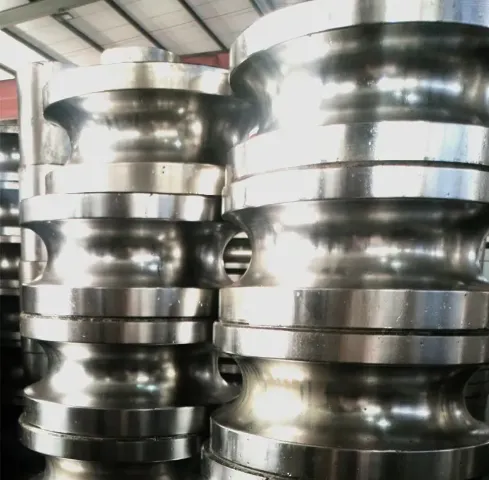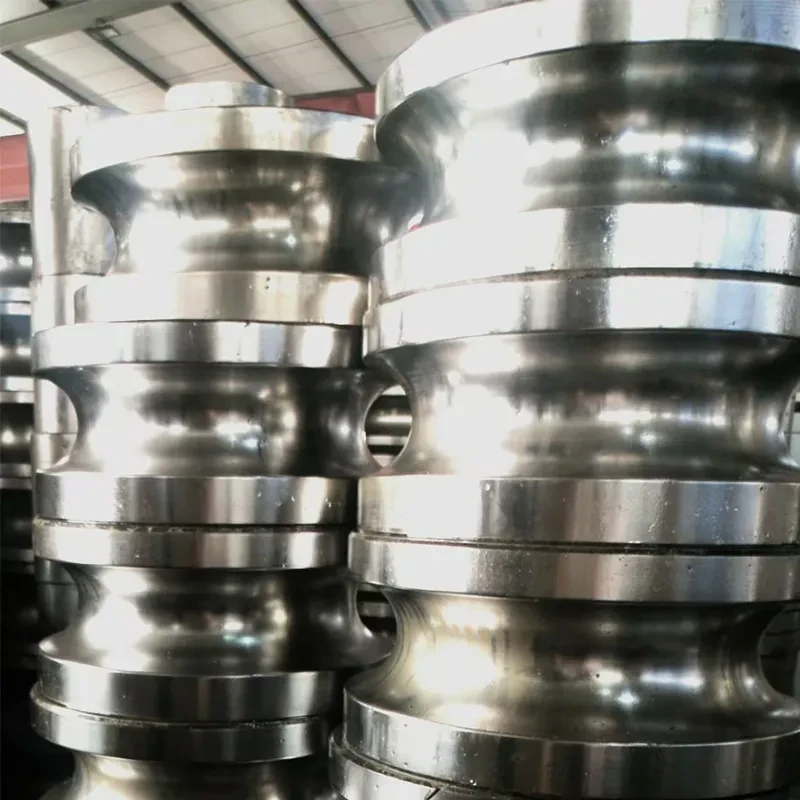High-Precision Channel Rolling Machine for Efficient Production C Channel & POP Channel Roll Forming Machine Manufacturer
- Introduction to channel rolling machine
technology and industry significance - Technological advances and performance insights
- Manufacturers comparison—analyzing leaders in channel rolling machine manufacturing
- Custom configuration solutions for diverse applications
- Application case studies from across the industry
- The importance of maintenance and operation optimization
- Future trends and innovations in channel rolling machine design

(channel rolling machine)
Introduction: The Growing Role of Channel Rolling Machine Systems
The evolution of the channel rolling machine has become a driving force within the global metal-forming sector. As demand rises for precision-engineered C-channels and customized structural profiles, investments in advanced forming machinery are surging. According to a 2023 market intelligence report, the global channel roll forming machine market surpassed USD 2.3 billion, with a cumulative annual growth rate (CAGR) of 5.8% over the past five years. Among these, modern C channel rolling machine platforms are lauded for their high-throughput, accuracy, and automation compatibility. With growing industrial, construction, and infrastructure applications, understanding the full spectrum of channel rolling machine capabilities, technical distinctions, and adaptive configurations is vital for manufacturers and end-users alike.
Technological Advancements and Performance Insights
The technical sophistication in channel rolling machines today allows for higher speed, precision, and versatility. Modern systems integrate computer numerical control (CNC), real-time monitoring, and hydraulic or servo-driven units, resulting in:
- Precision tolerance: ±0.15 mm on average for cut-length repeatability
- Production rate: Up to 25 meters/minute for standard C channel profiles
- Material range: Efficient shaping of galvanized steel, stainless steel, and aluminum
- Quick changeover: Tooling and setup times reduced by 60% in the latest designs
- Roll design: Modular and digital roll-forming for highly-customizable channel geometry
Leading Channel Rolling Machine Manufacturers: Benchmark Comparison
Choosing the optimal c channel rolling machine is contingent upon evaluating technical features, after-sales support, and global presence. Below is a comparative table of reputed manufacturers showcasing distinctions in production line performance, automation, and value-added services:
| Manufacturer | Max Production Speed (m/min) | Profile Flexibility | Automation Level | Warranty (years) | Key Differentiator |
|---|---|---|---|---|---|
| FormLine Industries | 28 | High (10+ shapes) | Full CNC/IoT | 3 | Integrated smart monitoring suite |
| BoundlessTech Roll Formers | 24 | Medium (6 shapes) | Semi-automated | 2 | Rapid setup release system |
| SteelMaster Solutions | 20 | Very High (customizable) | AI-assisted | 5 | Remote troubleshooting & diagnostics |
| ACE Roll Forming | 21 | High (8 shapes) | High (PLC based) | 2 | On-site operator training |
| ProTech Channel Machinery | 26 | Medium (5 shapes) | Full CNC | 3 | Energy-efficient drive system |
Among these, SteelMaster Solutions’ AI-assisted diagnostics stand out for predictive issue resolution and repeatable customization based on digital templates. In comparison, FormLine’s IoT suite leads in remote asset management—an advantage for multi-plant operators seeking real-time performance visibility.
Custom Configuration Solutions for Diverse Project Needs
Customization is increasingly prioritized by manufacturers and integrators to ensure project-specific geometries, rapid design adaptation, and process integration. Pop channel roll forming machine lines can be engineered with variable-width roll stations, quick-locking side supports, and digital length or punching systems. Three main categories define the customization landscape:
- Profile Geometry: Widths ranging from 30 mm to 300 mm and heights up to 100 mm, adjustable radii, web holes, and embossing for light-weighting.
- Process Integration: Addition of inline punching, cutting, or robotic stacking to streamline downstream operations; some lines cut cycle times by 45% through automated part handling.
- Material Handling: Coil-loading automation, scrap reduction modules, and protective surface treatment integration to maintain finish standards (noted defect rates as low as 0.1%).
Application Case Studies: Channel Rolling Machines in Action
Channel rolling machines have demonstrated versatility across industries. Insights from high-volume, precision, and demanding environments solidify their status as backbone infrastructure in modern manufacturing:
- Construction: Cold-formed C-section purlins fabricated on 24/7 roll-forming lines—one Australian frame manufacturer reported increasing their annual channel output from 1,400 to 2,750 tonnes after upgrading to a 25 m/min system, a 96% increase.
- Automotive: Roll-formed chassis reinforcements and roof rail sections with tolerance bands as narrow as 0.20 mm, ensuring OEM-level fitment and crash compliance.
- Energy: Deployment of marine-graded, anti-corrosion profiles for offshore cable trays; a North Sea wind farm project required more than 400 km of formed channel in three months, enabled by dual-lane pop channel roll forming machine systems.
- Warehousing: Bulk production of shelving and support channels—one North American client logged a 32% labor reduction and 41% cut in scrap following process automation.
Maintenance Strategies and Operational Optimization
The operational lifespan and productivity of a channel rolling machine depend on disciplined preventive maintenance and intelligent process optimization. Recent benchmarks show that plants implementing predictive maintenance, using machine-learning driven sensors, have seen:
- 38% fewer unplanned stoppages
- 22% lower tooling replacement costs
- 19% higher overall equipment effectiveness (OEE)
- Automated lubrication cycles and continuous wear monitoring of critical roll assemblies
- Consistent calibration of roller spacings using laser alignment tools
- Digital logging of production runs to identify and correct recurrent quality issues
Future Trends and Innovations in Channel Rolling Machine Technology
As manufacturers and fabricators demand greater flexibility, efficiency, and automation, the future of channel rolling machine solutions is driven by three pillars: digital transformation, sustainability, and human-machine collaboration. Next-generation systems are integrating AI-enabled process optimization, demand-driven production scheduling, and virtual commissioning via digital twins. The adoption of high-strength, recyclable alloys and energy-saving servo drives addresses environmental imperatives, with some factories reporting energy consumption drops up to 28%. Finally, user-centric interfaces and augmented reality (AR) maintenance platforms are democratizing advanced manufacturing for a broader workforce. These innovations ensure the channel rolling machine sector will be instrumental in supporting resilient, adaptive, and efficient supply chains worldwide for decades to come.

(channel rolling machine)
FAQS on channel rolling machine
Q: What is a channel rolling machine?
A: A channel rolling machine is a piece of equipment used to form metal channels from sheet materials. It shapes the metal into a specific channel profile. This process is essential in construction and manufacturing industries.Q: How does a c channel rolling machine work?
A: A c channel rolling machine uses rollers to gradually bend and form sheet metal into a C-shaped channel. The machine ensures consistent shape and accuracy. It's commonly used for making frames, supports, and structural components.Q: What materials can be used in a pop channel roll forming machine?
A: Pop channel roll forming machines typically work with galvanized steel, aluminum, and stainless steel. The choice of material depends on the required strength and application. These machines are versatile for various construction needs.Q: What are the benefits of using a channel rolling machine?
A: Channel rolling machines offer high precision, efficiency, and consistency in forming metal channels. They reduce manual labor and material waste. This leads to cost savings and higher production output.Q: Can a c channel rolling machine be customized for specific sizes?
A: Yes, c channel rolling machines can be customized to produce channels in different sizes and thicknesses. Manufacturers often provide adjustable or tailored solutions. This flexibility meets specific project requirements.-
Welded Pipe Production Line - BzZhou Xinghua Machinery Equipment Manufacturing Co., LTD.|High-Frequency Straight Seam Welding&Precision EngineeringNewsJul.22,2025
-
Welded Pipe Production Line - BzZhou Xinghua Machinery|High-Efficiency, Precision EngineeringNewsJul.21,2025
-
Welded Pipe Production Line-BzZhou Xinghua Machinery Equipment Manufacturing Co.,LTD.|High Precision, Efficient ProductionNewsJul.21,2025
-
Welded Pipe Production Line-BzZhou Xinghua Machinery Equipment Manufacturing Co.,LTD.|High Precision, Efficient ProductionNewsJul.21,2025
-
Welded Pipe Production Line-BzZhou Xinghua Machinery Equipment Manufacturing Co.,LTD.|High Precision, Efficient ProductionNewsJul.21,2025
-
Welded Pipe Production Line-BzZhou Xinghua|High Efficiency&CustomizationNewsJul.21,2025


